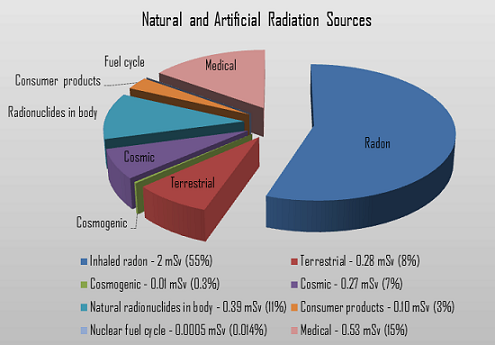Bismuth——Exposure Sources&Risk Assessments
First aid: Since there are many bismuth compounds in commercial use there are no special first aid recommendations. General first aid recommendations are often appropriate. For dermal overexposure, remove contaminated clothing and wash with soap and water. For ocular overexposure, flush with water for 15 min.
Target organ(s): Include eye, respiratory tract, kidney, liver, and nervous system
Occupational exposure limits: Bismuth telluride undoped: 15 mg/m3 (OSHA TWA) 10 mg/m3 (ACGIH TWA) 10 mg/m3 total dust (NIOSH TWA); 5 mg/m3 respirable (OSHA TWA), and 5 mg/m3 respirable (NIOSH TWA)

OCCUPATIONAL EXPOSURE
Sources of Exposure
Although occupational exposure may occur in the manufacture of cosmetics, industrial chemicals, metal alloys, and pharmaceuticals, occupational overexposures are rare (Fowler and Vouk, 1986). Bismuth presents a low hazard for usual industrial handling.
Many occupations can present the possibility of overexposure to bismuth compounds because these compounds are used as coloring agents for ceramics, enamels, and paints; as corrosion inhibitors for water systems; as catalysts in the plastics and petroleum industry; and as flame retardants for resins. Bismuth is used in metallurgy for the manufacture of numerous alloys, some of which are used in welding and production of malleable irons. Bismuth telluride is used as a semi-conductor. Bismuth oxide, hydroxide, oxychloride, trichloride, and nitrate are used in cosmetics. Other salts such as succinate orthoxyquinolate, subnitrate, carbonate, and phosphate also have pharmaceutical applications (Nordberg, 2012).Workers can be exposed to insoluble bismuth material in the mining and processing of ore that contains lead or gold; when working with bismuth or its alloys; when formulating and using lubricants, catalysts, and as a base metal. Although the literature reports some symptoms from occupational overexposure to bismuth, it is uncommon. Overexposure to bismuth compounds in the workplace may cause some short-lived symptoms such as fatigue, joint pain, headaches, backaches, and other nonspecific symptoms (Fowler and Vouk, 1986). On the rare occasion when occupational overexposure to bismuth or its compounds are linked to human toxicity it is associated with other more toxic compounds. For example, in an article by Bachanek et al. (2000) numerous adverse health effects were reported over time in a worker in a glass factory in Poland. Findings included loss of hair, scars and ulcerations, trigeminal nerve damage, and impalpable lymph nodes. His teeth were extracted over a 13-month period because they showed unusual damage such as brittleness and dark brown color. Heavy metal levels of thallium, lead, cadmium, and bismuth were substantially elevated. Bismuth levels in tooth material were180 times greater than the control group average. Ascribing the patient’s medical problems to the various elevated metal levels was difficult although some of the observations could be linked directly to one of the other metals present. For example, hair loss is well known to be linked to thallium overexposure. Yet bismuth is included as one of the metals linked to the worker’s illness.
Industrial Hygiene

The permissible exposure limit (PEL) values are established by the OSHA and the threshold limit values (TLV) are set by the ACGIH. The only PELs for bismuth compounds set by OSHA are for bismuth telluride undoped (15 mg/m3 [total dust and 5 mg/m3 respirable dust] and selenium doped bismuth [5 mg/m3]) (OSHA, 2008). This limit is based on the observation that overexposure to these compounds may cause irritation of the eyes, nose, throat, and respiratory tract, as indicated by animal studies (NIOSH/OSHA, 1992). The TLVs set by ACGIH for these compounds are 10 and 5 mg/m3 undoped and doped, respectively. These criteria were established in 1973. The criterion set for bismuth telluride undoped is based on thecompound being considered an “inert” material lacking any response other than physical irritation in an animal inhalation study. The criterion for “doped” bismuth telluride is based on the results of inhalation studies in several animal species, including dogs, rabbits, and rats, wherein granulomatous lesions were seen in all exposed species at 15 mg/m3 for 1 year, 5 days per week. Since the lesions were considered mild and reversible, the lower criterion was recommended.
In any industrial operation, excessive exposure to hazardous materials should be avoided through use of appropriate administrative and engineering controls, such as local ventilation. If engineering controls are not feasible, a program requiring respirators and other personal protective equipment is needed. Impervious gloves, clothing, eye protection, and NIOSH-approved respiratory protection should be used to protect workers from overexposure to bismuth and bismuth compounds which may present a health hazard. If protective clothing is to be reused, laundering contaminated clothing should be controlled to avoid additional exposure-related hazards. For operations in which exposure to hazardous materials is possible, good personal hygiene habits are strongly recommended. These include no eating or smoking in the work area; washing hands and face after leaving the work area and before eating, smoking, or using toilet facilities; and removing contaminated clothing and showering at the end of the workday.
RISK ASSESSMENT
Although bismuth has not been the subject of any complete international review by WHO or other key organizations, e.g., US EPA, numerous organizations with a wide range of constituencies have opined on its hazard potential (COT, 2008). According to the Bismuth Institute Information Center, in a world where many elements and compounds present a multitude of hazards, bismuth metal is one of those rare elements that is considered safe because it is non-toxic and non-carcinogenic (Palmierri, 1993). Although the objectivity of a trade association group might be questioned, their conclusion is consistent with others such as Beliles (1979), who concludes that “except for strong acidic salts as bismuth trinitrate or violently reactive compounds such as bismuth tripentafluoride, bismuth compounds do not present a hazard by dermal application, inhalation or injection,” the usual routes of occupational exposure. The International Labor Organization concludes that “there have been no reports of occupational (illness) during the production of metallic bismuth and the manufacture of pharmaceuticals, cosmetics and industrial chemicals. Because bismuth and its compounds do not appear to have been responsible for poisoning associated with work, they are regarded as the least toxic of heavy metals currently used in industry” (Nordberg, 2012).
REFERENCES
Occupational Safety and Health Administration (OSHA) (2008) Permissible exposure limits. 29 CFR 1910.1000. In: Bismuth Telluride, Washington, DC: Occupational Safety and Health Administration.
Palmierri, Y. (1993) Bismuth: The Amazingly “Green” Environmentally Minded Element, Belgium: The Bulletin of the Bismuth Institute.
Salvador, J.A., Figueriedo, S.A., Pinto, R.M., and Silvestre. S.M. (2012) Bismuth compounds in medicinal chemistry. Future Med. Chem. 11:1495–523. Available at www.ncbi.nlm.nih. gov/pubmed/22857536.
Sano, Y. et al. (2005) Oral toxicity of bismuth in rat: single and 28-day repeated administration studies. J. Occup. Health 47(4):293–298. Available at http://www.ncbi.nlm.nih.gov/ pubmed/?term=bismuth+tolerable+daily+intake.
You may like
Related articles And Qustion
See also
Lastest Price from Bismuth manufacturers

US $6.00/kg2025-04-21
- CAS:
- 7440-69-9
- Min. Order:
- 1kg
- Purity:
- 99%
- Supply Ability:
- 2000KG/Month

US $6.00/KG2025-03-28
- CAS:
- 7440-69-9
- Min. Order:
- 1KG
- Purity:
- 99%
- Supply Ability:
- 20TONS




